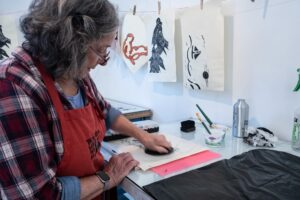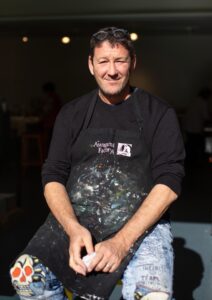
Daniel Heyman says woodblock printing is a skill that takes a while to hone. He first learned it in Japan during a two-month stay as an artist-in-residence in the village of Nagasawa in 2002. Although printmaking is not the primary focus of his own work — he makes paintings, etchings, and drawings, too — Heyman has continued with printmaking “on and off ever since,” he says.
Heyman, who lives in Tiverton, R.I., was in Truro to teach a workshop at Castle Hill’s Edgewood Farm. His seven students had come from near and far to learn a technique that was especially popular in Japan’s Edo period, which lasted from the early 1600s to the mid-1800s.
Woodblock printing feels “wholesome,” Heyman says. “It’s beautiful, and there are no dangerous chemicals involved.”
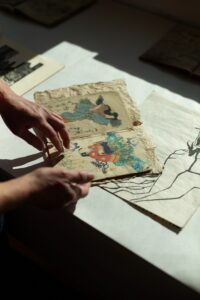
Students spent the first day of the three-day workshop carving images into wooden blocks. “The image is made out of shapes, not lines,” says Heyman, meaning all negative space must be carved away so that the image stands out in relief.
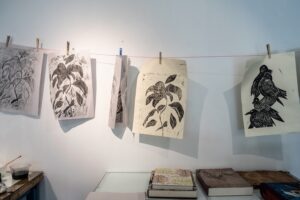
They used small tools — V-gouges, U-gouges, chisels, and knives — to cut into thin sheets of Shina plywood, which is made from linden trees and imported from Japan. “Shina is very well adapted for beginners in this technique,” says Heyman. It is relatively soft and has an even, undiscernible grain; other woods have rougher grains and knots that can affect the look of the prints.
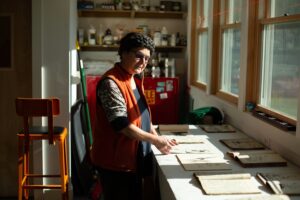
In a corner of the print workshop, Antonia DaSilva, who lives in Truro, carved rows of chickens. Nearby, Dia Stolnitz, an artist from New Hampshire, drew an ancient Chinese fishing glove with long spiky fingers onto her woodblock. “They’re very violent, but I do think the shape is cool,” she said. “I came with a very gentle idea of whales. But why do whales when you can do talons?”
Debra Gold, here from North Carolina, was inspired by “the tangles of daylilies all over the Cape,” she said. She used a pencil to sketch a gently wilting flower onto her woodblock. On the other side of the room, Alan Motch, from Truro, started work on a more abstract drawing: rectangular striped columns of various lengths. “I like the different rhythms of the stripes,” he said. “When you look at them, your eye travels around.”
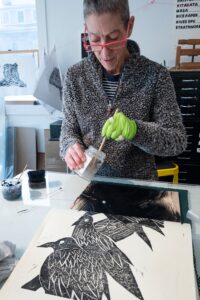
The group delved into the printing process the next day. Onto their carved woodblocks, they brushed a mixture of sumi ink (a black ink made of soot and gum arabic) with rice paste to make a “more viscous ink,” Heyman says. On top of the inked woodblocks, the students laid damp sheets of mulberry paper. That paper is “strong but also thin,” says Heyman, “whereas cotton paper is not as strong but it’s much thicker and heavier.” Students used barens — disks held in the hand — to rub the back of the mulberry paper, transferring the ink.
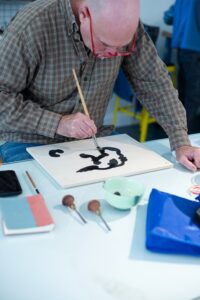
The third day of the workshop was devoted to printing again and to correcting carvings where mishaps had occurred.
This was not Heyman’s first time teaching a workshop at Castle Hill. “Last year I did a kite-making workshop where we did oil-based western printing on paper and then built kites,” he says. “That was a beautiful class.”
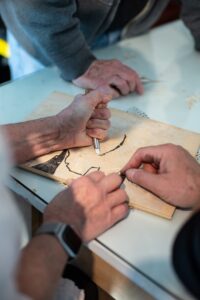
“I hope the students continue to practice,” Heyman says. “This is only the beginning for them; they’ll eventually develop muscle memory. They’ll understand how the moisture should feel in your hands, how the ink should look — all those things take a lot of experience. There’s no shortcut.”
